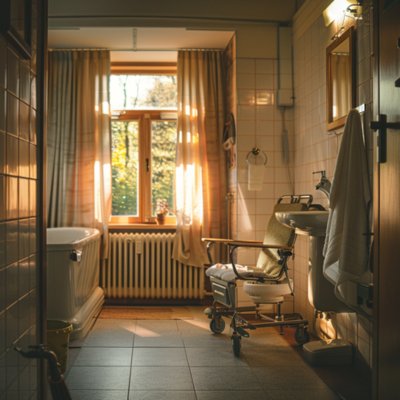Patient Lifts in Institutional Settings: Hospitals, Nursing Homes, and Rehabilitation Centers
In the realm of healthcare facilities, patient lifts stand as silent guardians of safety and dignity. These essential devices play a pivotal role in hospitals, nursing homes, and rehabilitation centers, fundamentally transforming patient care and caregiver well-being. As healthcare institutions strive to enhance patient outcomes while prioritizing staff safety, understanding the nuances of patient lift implementation becomes crucial. This comprehensive guide explores the world of institutional patient lifts, delving into types, safety protocols, regulatory requirements, and best practices that shape modern healthcare environments. Whether you're a healthcare administrator, a safety officer, or a curious patient, join us in uncovering how these powerful tools are elevating care standards across diverse healthcare settings.
The Evolution of Patient Handling in Healthcare Institutions
The journey from manual patient handling to sophisticated lift systems reflects the healthcare industry's commitment to safety and efficiency.
Traditional Approach
- Manual lifting by healthcare staff
- High risk of caregiver injuries
- Limited options for heavy patients
- Inconsistent transfer techniques
Modern Lift Systems
- Diverse lift types for various needs
- Significantly reduced injury risks
- Specialized solutions for bariatric care
- Standardized, safe transfer protocols
- Integration with electronic health records
Key Considerations in Institutional Patient Lift Implementation
Essential Factors for Effective Lift Programs
- Comprehensive Needs Assessment: Evaluating patient demographics and facility layout
- Equipment Selection: Choosing lifts that match institutional requirements
- Staff Training: Implementing thorough, ongoing education programs
- Safety Protocols: Developing and enforcing clear usage guidelines
- Maintenance Schedules: Ensuring regular equipment checks and servicing
- Regulatory Compliance: Meeting state and federal safety standards
- Cost Management: Balancing initial investment with long-term benefits
- Integration with Care Plans: Incorporating lift usage into patient care strategies
Types of Patient Lifts in Institutional Settings

Hoyer Advance-E Power Lift
An electric floor-based lift suitable for various institutional settings, offering ease of use and versatility.
- Smooth electric operation for patient comfort
- Compact design for easy maneuvering in tight spaces
- Adjustable base width to accommodate different beds and chairs
- High weight capacity for diverse patient needs

Hoyer Deluxe Power Lift
A robust power lift designed for frequent use in high-demand institutional environments.
- Durable construction for long-term institutional use
- Powered base adjustment for optimal positioning
- Advanced control system for precise movements
- Compatible with a wide range of sling types

Bestlift PL350CT Full Body Patient Lift
A versatile full-body lift suitable for various institutional care settings.
- Foldable design for easy storage in space-constrained facilities
- Adjustable base for accessing different bed types
- Smooth-rolling casters for effortless maneuverability
- High weight capacity for diverse patient populations
Patient Lifts Across Different Healthcare Settings
1. Hospitals
In acute care settings, patient lifts play a crucial role in safe patient handling, particularly in areas like intensive care units, emergency departments, and surgical wards. Hospitals often utilize a mix of ceiling-mounted tracks and mobile floor lifts to accommodate various patient needs and room layouts.
2. Nursing Homes
Long-term care facilities rely heavily on patient lifts for daily resident care. Sit-to-stand lifts are particularly popular in these settings, promoting resident mobility and independence while ensuring safety during transfers.
3. Rehabilitation Centers
In rehabilitation settings, patient lifts are integral to therapy programs. Specialized lifts that support partial weight-bearing are often used to assist patients in regaining strength and mobility during recovery.
4. Outpatient Clinics
While less common, outpatient facilities may use portable lifts for specific procedures or examinations, ensuring safe transfers for patients with mobility challenges.
For more insights on how patient lifts are used in home care settings, explore our article on Choosing the Right Patient Lift for Home Use: A Comprehensive Guide.
Challenges and Strategies in Institutional Lift Implementation
Implementing a comprehensive patient lift program in healthcare institutions comes with several challenges:
Initial Costs
High upfront investment for equipment and installation.
Staff Resistance
Overcoming habits and encouraging consistent lift usage.
Space Constraints
Adapting existing facility layouts to accommodate lifts.
Ongoing Training
Ensuring all staff are properly trained and stay updated.
Strategies for addressing these challenges include:
- Conducting thorough cost-benefit analyses to justify investments
- Implementing change management strategies to encourage staff buy-in
- Utilizing space-efficient lift designs and optimizing room layouts
- Developing comprehensive, ongoing training programs with regular recertification
Implementing a Safe Patient Handling Program: Key Steps
To successfully integrate patient lifts into institutional care, follow these essential steps:
For more detailed information on maintaining patient lifts in healthcare settings, refer to our guide on Patient Lift Maintenance: Essential Tips for Longevity and Safety.
Regulatory Compliance and Safety Standards
Ensuring compliance with regulatory requirements is crucial for institutional patient lift programs. Key considerations include:
- OSHA Guidelines: Adherence to Occupational Safety and Health Administration standards for safe patient handling.
- State Regulations: Compliance with state-specific laws on safe patient handling equipment.
- Accreditation Standards: Meeting requirements set by accrediting bodies like The Joint Commission.
- Equipment Certifications: Using lifts that meet FDA and other relevant safety certifications.
- Documentation: Maintaining records of training, equipment maintenance, and incident reports.
Stay informed about the latest regulatory updates and industry standards to ensure ongoing compliance and safety.
Conclusion: Elevating Care Through Strategic Lift Implementation
The implementation of patient lifts in hospitals, nursing homes, and rehabilitation centers represents a significant leap forward in healthcare quality and safety. These devices not only protect patients and caregivers from injuries but also enhance dignity, comfort, and overall care effectiveness.
By adopting a systematic approach to lift implementation—encompassing thorough assessment, strategic equipment selection, comprehensive training, and ongoing program evaluation—healthcare institutions can create safer, more efficient care environments. The benefits extend beyond immediate safety improvements, contributing to higher staff satisfaction, reduced turnover, and enhanced patient outcomes.
As healthcare continues to evolve, the role of patient lifts in institutional settings will only grow in importance. By prioritizing these essential tools and the programs that support them, healthcare facilities can demonstrate their commitment to excellence in patient care and staff well-being.
Elevate Your Institutional Care with Advanced Patient Lift Solutions
Discover our range of high-quality patient lifts designed for institutional use. Our expert team can help you select the right equipment to enhance safety and efficiency in your healthcare facility.
Explore Institutional Patient Lifts








